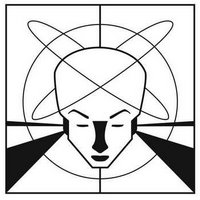Breathwork.
Breathwork usually refers to deliberate hyperventilation, when used within psychotherapy or meditation. Proponents believe the technique may be used to attain alternate states of consciousness, and that sustained practice of breathwork may result in spiritual or psychological benefits.
Types of Breathwork
Several recent Western therapies are based on mild to extreme alterations of normal breathing, and describe themselves as Breathwork. These include:
Holotropic Breathwork, developed by Stanislav Grof
Radiance Breathwork, developed by Gay Hendricks
Rebirthing-Breathwork, developed by Leonard Orr
Origins of Breathwork
Breathwork has also been used as a label for yogic Pranayama and Tibetan Tantric Tummo, traditional practices from which the modern Western therapies most probably derive. Occasional use of the term Breathwork to describe Buddhist Anapanasati or “mindfulness of breathing” appears to be misleading, because in that the meditator breathes naturally, without attempting to change the length or depth of the breath.
Criticism
Critics have pointed to well-known physiological dangers associated with hyperventilation, such as hypoxia. Others conversant with the esoteric ideas underlying much Breathwork have also raised concerns about unskilful or premature psychospiritual awakening of patients or meditators.
Breathwork usually refers to deliberate hyperventilation, when used within psychotherapy or meditation. Proponents believe the technique may be used to attain alternate states of consciousness, and that sustained practice of breathwork may result in spiritual or psychological benefits.
Types of Breathwork
Several recent Western therapies are based on mild to extreme alterations of normal breathing, and describe themselves as Breathwork. These include:
Holotropic Breathwork, developed by Stanislav Grof
Radiance Breathwork, developed by Gay Hendricks
Rebirthing-Breathwork, developed by Leonard Orr
Origins of Breathwork
Breathwork has also been used as a label for yogic Pranayama and Tibetan Tantric Tummo, traditional practices from which the modern Western therapies most probably derive. Occasional use of the term Breathwork to describe Buddhist Anapanasati or “mindfulness of breathing” appears to be misleading, because in that the meditator breathes naturally, without attempting to change the length or depth of the breath.
Criticism
Critics have pointed to well-known physiological dangers associated with hyperventilation, such as hypoxia. Others conversant with the esoteric ideas underlying much Breathwork have also raised concerns about unskilful or premature psychospiritual awakening of patients or meditators.

0 Comments:
Post a Comment
Psychologist